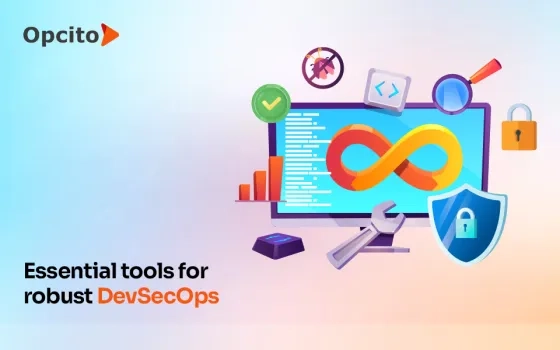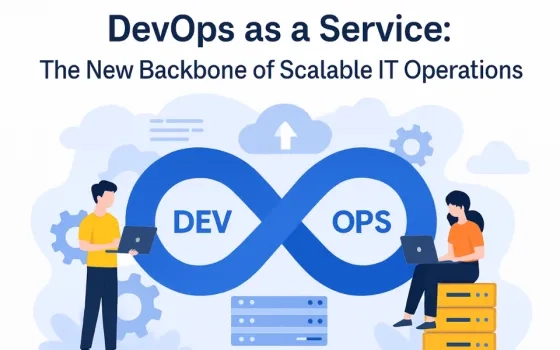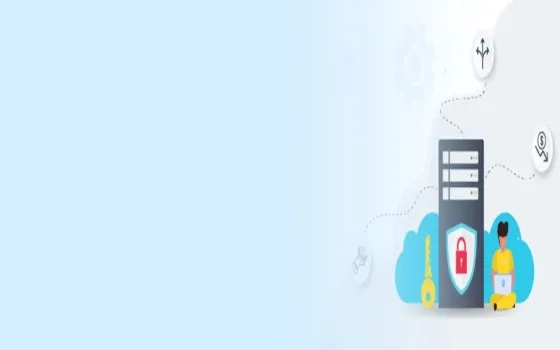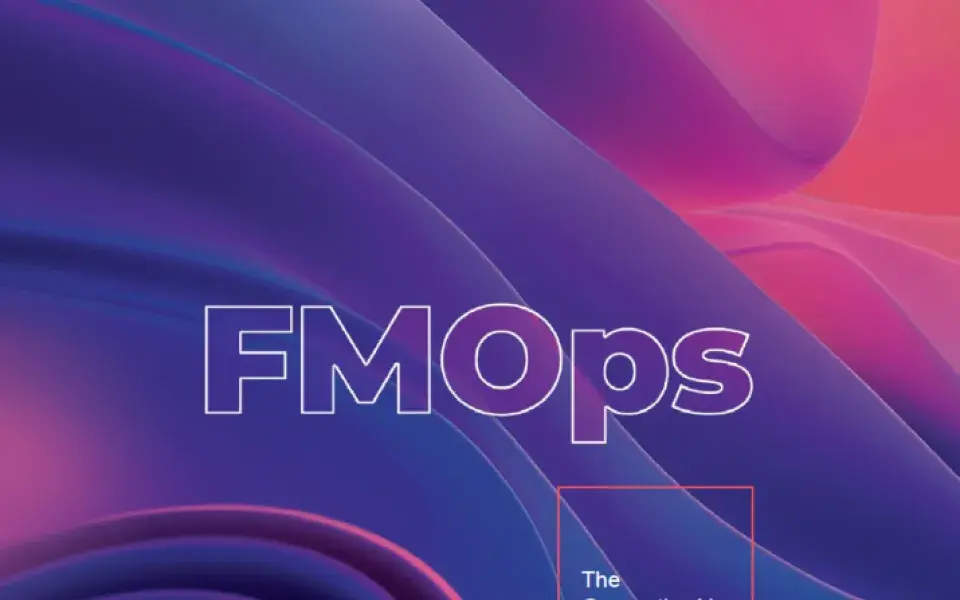Selecting the right tools is pivotal in your DevOps journey. The tools you select significantly decide the scale of your DevOps success. And this holds true for the DevSecOps landscape since security is a leading parameter for any software environment these days. According to a recent MarketsandMarkets research, the DevSecOps market will grow from USD 10.4 billion in 2023 to USD 25.5 billion by 2028, indicating a substantial increase in utilizing various tools for robust DevSecOps ecosystems. This guide focuses on helping you choose the right DevSecOps tools for a secure and efficient software development pipeline in an ever-evolving digital landscape.
Top DevSecOps tools by phases
For better understanding, let's break down the tools into the four major phases –
- Secured Coding
- Continuous Build and Integration
- Continuous Deployment and Delivery
- Continuous Monitoring
We’ll take a detailed look at the tools and technologies deployed at each stage.
1. Secured Coding
The stakes are high in the digital age. Insecure code can have severe consequences, including data breaches, system failures, and reputational damage. Therefore, understanding the significance of secure code and the tools at your disposal is not just good practice; it's a critical need. Secure coding is a pivotal step, ensuring that your software remains unaffected by vulnerabilities by building resilient, threat-resistant software.
Let's begin by exploring the tools to ensure secure coding principles. We'll focus on Source Code Review, (SCA) Software Composition Analysis, and (SAST) Static Application Security Testing, which significantly craft inherently secure code.
Source Code Review
Code reviews identify errors, maintain coding standards, and reduce the time spent on manual reviews. However, choosing the right code review tool can be challenging due to the many available options, each with unique features and integrations.
These tools are gaining popularity for their ability to pre-emptively spot issues, saving time, money, and reputation. Integrated validation rules enforce coding standards, ensuring code compliance before deployment. Code review tools foster collaboration and feedback among developers and contribute to more reliable systems.
KEY TOOLS FOR SOURCE CODE REVIEW
- Crucible
- GitHub
- Bitbucket
- Gerrit
- Azure DevOps
- AWS Code Commit / AWS Code Star
- SonarCloud
Software Composition Analysis (SCA)
Software Composition Analysis (SCA) scrutinizes applications and related artifacts, such as containers and registries. It detects open-source and third-party components with known vulnerabilities, outdated patches, or licensing risks. SCA fortifies the software supply chain, supporting secure application development by including secure components. It equips development teams to swiftly track and evaluate open-source elements within projects, encompassing dependencies, licenses, deprecated modules, and vulnerabilities.
SCA's scanning process yields a Bill of Materials (BOM), an inventory of software assets, achieved through a package manager, manifest file, and source code inspections. The BOM is cross-referenced with databases, including the National Vulnerability Database (NVD).
TOP SCA TOOLS
- Nexus Repository
- Checkmarx SCA
- Snyk Open Source
- CloudeDefense.AI
- GitLab DevSecOps Platform
- GitHub
- JFrog Software Supply Chain Platform
- GuardRails
- Aqua Security
- Argon CI/CD Security
Static Application Security Testing (SAST)
Static Application Security Testing (SAST) tools are designed to automatically scan an application's source code, identifying vulnerabilities before deployment. SAST, a form of white-box testing, provides granular assessments down to the code line. The key advantages include:
- Early vulnerability identification in the software development life cycle
- Real-time feedback to developers
- Rapid analysis of the entire codebase
SAST doesn't require a running application and doesn't disrupt the development process. It prevents security issues from becoming afterthoughts and offers graphical representations of vulnerabilities. Developers can create customized reports and track security issues, contributing to a secure software development life cycle. SAST is highly efficient, scanning millions of lines of code within minutes and detecting critical vulnerabilities like SQL injection and buffer overflows.
PROMINENT SAST TOOLS
- GitHub
- Checkmarx
- Fortify Static Code Analyzer
- SonarQube
- CodeScan
- CoreOS Clair
- Argon CI/CD Security
- New Relic
- Nexus Lifecycle
2. Continuous Build and Integration
Continuous build and integration involves developers frequently merging code changes into a central repository. This practice predominantly focuses on the build and integration phase during software release. It aims to expedite bug detection and resolution, enhance software quality, and minimize the duration required to validate and launch software updates. As each change is typically small, pinpointing the specific change that introduced a defect can be done quickly. This allows teams to move fast while keeping high-quality standards. Let's look at the tools within this stage.
Container Image Scan
Deploying applications in containers can introduce security challenges. A significant risk involves container images, which serve as templates for creating new containers. These images may contain security vulnerabilities, potentially compromising all the containers. Cyber attackers can also exploit image vulnerabilities to target other containers, compromising data and gaining control of the host machine. Container security scanning prevents these risks, ensuring secure production environments. These scanning tools continuously assess images and containers, a fundamental component of DevSecOps practices.
NOTABLE CONTAINER IMAGE SCANNING TOOLS
- Scan on Push: AWS ECR
- Trivy
- Clair
- Cilium
- OpenSCAP Workbench
- Sysdig Falco
- Lacework
- SonarQube Security
Dynamic Application Security Testing (DAST)
Dynamic Application Security Testing (DAST) actively probes running applications for security vulnerabilities through penetration tests. This black-box testing method examines applications from the outside, focusing on inputs and outputs. DAST tools simulate attacks on running applications, resembling real-world attackers with limited internal knowledge. It's crucial for securing web applications, as it identifies weaknesses that could lead to data breaches. It is distinct from other security solutions, as it emphasizes external testing, aligning with how external hackers approach application vulnerabilities.
LEADING DAST TOOLS
- GitLab
- Checkmarx
- PortSwigger Burp Suite
Interactive Application Security Testing (IAST)
IAST operates within integrated development environments, continuous integration setups, and production, offering real-time feedback. Using software instrumentation, IAST monitors application behavior. It continuously analyzes interactions initiated by manual and automated tests and detects vulnerabilities promptly. The vulnerabilities it detects include plaintext API keys, input sanitation issues, or unsecured connections. IAST is a critical defence against cyberattacks, allowing developers to address known vulnerabilities before they become entry points for malicious actors, enhancing application security.
RECOMMENDED IAST TOOLS
Fuzzing
Fuzz testing, or fuzzing, is an automated software testing approach that assesses system integrity by injecting invalid or unexpected inputs to reveal vulnerabilities and defects. Fuzzing tools monitor for anomalies, such as crashes or data leakage, because of these inputs, offering insights into security, performance, or quality issues. It provides an additional perspective on software quality and security, considering that all programs will likely contain bugs waiting to be uncovered. Fuzzing doesn't replace traditional testing methods but complements them. It excels at detecting buffer overflows, DoS vulnerabilities, cross-site scripting, and code injection. However, it might not identify silent security threats like spyware or rootkits.
While it's a cost-effective, scalable technique, it's often used with other methods such as black box testing, beta testing, and unit testing for a more comprehensive assessment. Fuzzing can be employed from black-and-white box perspectives and is valuable in uncovering unknown software vulnerabilities.
KEY FUZZING TOOLS
3. Continuous Deployment and Delivery
Continuous Delivery and Continuous Deployment are essential DevOps phases. They let you release tested builds to users quickly for experimentation and feedback. You can automate releases or require manual approval. Manual releases are time-consuming and impractical in today's dynamic environment. Robust CD tools are essential, especially for enterprises.
However, choosing the right Continuous Deployment tool is crucial. CD tools automate deployment, saving time, reducing costs, and improving reliability. These tools free developers from manual tasks, ensuring efficient software development and deployment.
Systems, Containers, and Network vulnerability scanning
Vulnerability scans, or vulscans, are essential for safeguarding assets by detecting security issues like missing updates and misconfigurations. These scans have evolved to cover various IT elements, from local networks and devices to IoT, OT, websites, applications, networks, and containers.
Vulnerability scanning tools automate asset identification and inventory creation for network-connected devices, including servers, desktops, and more. These tools also capture operational details like operating systems, software, open ports, and user accounts, helping organizations monitor and mitigate vulnerabilities effectively.
Security teams rely on these scanners to uncover security flaws across their systems and applications. Automated vulnerability scanning has largely replaced manual scans due to cost-efficiency and scalability. It involves data collection, analysis, categorization, prioritization, and reporting vulnerabilities, contributing significantly to robust security programs.
BEST VULNERABILITY SCANNING TOOLS
- Tenable Security Center
- Snyk
- BurpSuite
- Amazon Inspector
- Google Cloud Security Scanner
Image and Artifact repository scan
Regular image and artifact repository scanning is vital in modern software development, especially for containerized applications. This practice automates checking security, vulnerabilities, and compliance for stored assets like container images and software artifacts. It plays a crucial role in maintaining system security by uncovering vulnerabilities and license violations. The scanning procedure entails inputting registry information, initiating scans, and reviewing outcomes.
These scans seamlessly integrate into the development process and container registry checks, ensuring only secure and authorized components are used. It involves comprehensively analyzing image contents, cross-referencing them with vulnerability databases, and enforcing predefined policies.
IMAGE AND ARTIFACT REPOSITORY SCANNING TOOLS
- Nmap
- Tenable
- OpenVAS
- RapidFire VulScan
- Orca Security
- Snyk
Repository Vulnerability Scanning
Repository scanning is essential for uncovering, assessing, and prioritizing code issues. It acts as a proactive measure to prevent the introduction of new problems. Scans can be scheduled or triggered by specific events within the repository, ensuring timely examination. This approach enables developers to identify and rectify issues swiftly, offering real-time feedback to enhance their code. This proactive approach enhances overall software security and performance.
PROMINENT REPOSITORY VULNERABILITY SCANNING TOOLS
- Nmap
- Tenable
- OpenVAS
- Microsoft Defender Vulnerability Management
- Orca Security
- Snyk
- BurpSuite
4. Continuous Monitoring
Continuous monitoring offers real-time threat detection, fostering proactive cybersecurity by swiftly identifying and containing incidents. This approach enhances risk management, allowing efficient resource allocation and compliance with regulatory standards. Improved incident response is facilitated with detailed insights into attacks and enhanced visibility across the IT environment.
In addition, continuous monitoring is crucial in monitoring user behavior post-updates and operational health. DevOps becomes vital in controlling risks, providing end-to-end visibility, feedback loops, and early performance issue detection. Monitoring aids in managing costs, application complexity, and maintaining a positive digital experience while promoting better risk and performance management.
End-to-End Monitoring
End-to-end monitoring is a widely adopted practice catering to developers, testers, managers, and diverse stakeholders. It involves testing the software and simulating real-user scenarios and interactions. Testing the entire system provides:
- A more holistic view of software quality
- Enhanced confidence for developers and testers to meet user expectations
END-TO-END MONITORING TOOLS
- Prometheus
- Grafana
- Zabbix
- Nagios
- Datadog
- InfluxDB
- Elastic Stack
- Splunk
- New Relic
Runtime Application Self-Protection (RASP)
Runtime Application Self-Protection (RASP) technology is vital to fight malicious attacks on applications. It monitors an application's behavior to prevent probing for vulnerabilities or unauthorized actions. Unlike traditional security methods, RASP distinguishes between normal and malicious activities, enhancing protection without human intervention. It operates directly within the application's runtime environment, intercepting calls to secure legitimate behavior and block attacks. RASP's real-time capabilities provide accurate threat detection, minimizing false alarms common in web application firewalls (WAFs). It empowers security teams to prioritize strategic concerns and educates users about denied requests.
RASP TOOLS
- Imperva
- Jscrambler
- JSDefender
- Fortify
- Hdiv
- OpenRASP
- Signal Sciences
Application and Penetration Testing
These tools are essential for security professionals, often ethical hackers or penetration testers, who simulate attacks on an organization's network or systems to identify potential weaknesses. By deploying various tools, they assess open ports, search for known vulnerabilities and misconfigurations, monitor network traffic for communication paths and encryption status, intercept and modify web traffic, and assess password security. Following the evaluation, penetration testers provide comprehensive reports that empower organizations to bolster their cybersecurity defences and mitigate potential risks proactively, making penetration testing an invaluable practice in today's ever-evolving threat landscape.
TOOLS FOR APPLICATION AND PENETRATION TESTING
- New Relic
- Invicti
- Zed Attack Proxy (ZAP)
Empower your DevSecOps ecosystem with the right tools
Today, the importance of a robust DevSecOps ecosystem cannot be overstated. There is a demand for the right tools because tools form the backbone of any DevSecOps journey. The DevSecOps market is experiencing remarkable growth, indicating the increasing adoption of tools for building vital DevSecOps ecosystems. The choices you make will have a significant impact on your DevSecOps success. Secure your software, data, and reputation by implementing DevSecOps practices and leveraging the right tools. The time to act is now!
















